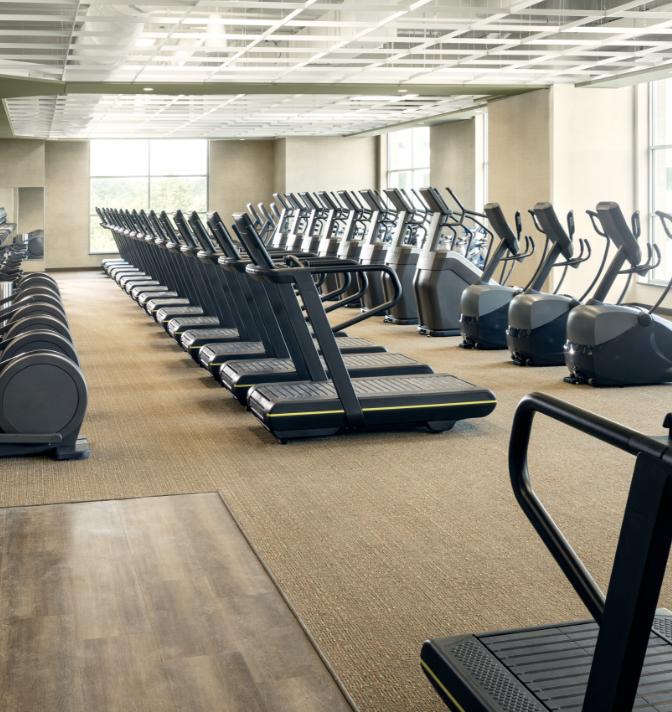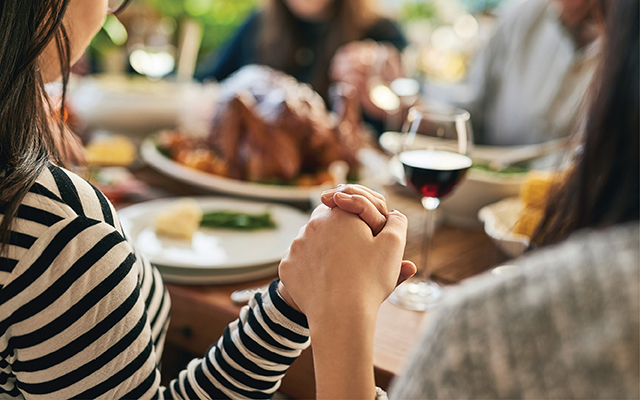Being raised in a Puerto Rican–Mexican-American Catholic family meant that my parents had certain expectations for my future: I would grow up, get an education and career, then start a traditional Catholic family. So when I came out as bisexual at age 15, it was hard for them to be supportive. This wasn’t the life they had envisioned for me, and they didn’t understand.
I had known about my sexuality since puberty, but I didn’t have the language to express it. I knew there was gay and lesbian, but I didn’t know I could be anything else. When I was 13, I met someone who identified as bisexual, and immediately I knew: That’s what I am! I’m bisexual, too. It was euphoric to have my feelings validated.
My parents’ reaction was pretty much what I’d expected. For years, I’d felt like something was wrong with me, and that my sexuality was a sin. I was depressed from a very young age because of this realization and was self-harming to cope with the feelings of shame and isolation.
After I came out, my parents continued to reinforce what they wanted for my future. So when I was 19 and my boyfriend wanted us to move in together, I told him we’d have to get married first. I thought it would appease my parents — it seemed like the good Catholic thing to do.
Moment of Truth
I knew immediately the marriage wasn’t right for me. I had been pretending for so long to be the person my parents wanted me to be; as a result, I didn’t know who I was.
I was angry, confused, and deeply unhappy with myself, which made for an extremely toxic relationship. I moved out after three months, and our divorce was finalized about a year later.
My parents and I grew closer during that time. They were very supportive of my decision, and it meant a lot to realize they didn’t want me to be stuck in a bad marriage, or to pretend to be happy when I wasn’t — they truly just wanted what was best for me.
After my divorce, I was determined to start taking care of myself, but I didn’t have any idea how to support my mental health. Though I’d tried counseling during my marriage, it was hard for me to find a therapist who I could connect with and trust.
Still, I knew that I hadn’t really been caring for myself in the way I deserved. I wanted to find a better, healthier path.
Ready to Move
I’d never been into physical activity: I used to ditch gym class, and sports were never really on my radar. My parents had emphasized the importance of academics over athletics — they’re both first-generation Americans who lifted themselves out of poverty through education. I planned to be a journalist.
When I started working out during the summer before my senior year of college, it was mostly for superficial reasons. I was newly divorced, and I wanted to look hot. At first, I was all about cardio and abdominal workouts. Sometimes I would try temporary diets — like cutting out bread for a month, really just to lose weight. As I look back, it wasn’t the healthiest approach, but I didn’t know that yet.
After graduation, I got a job working the front desk at a small gym, hoping to learn more about health and fitness. I took advantage of the free personal-training sessions, and I learned how to do squats, bench presses, and biceps curls. It was powerful to realize that I could transform my body through weightlifting, and I loved how strong and confident it made me feel.
I hadn’t realized that my effort to look better would actually help me start to feel better. It was like I was getting to know myself for the first time ever, going after what I wanted for my life instead of doing what I thought was expected of me.
I realized that I wanted to always feel that good about myself. Fitness became the healthy coping mechanism I needed to turn my life from negative to positive. That’s when I decided to pursue a career in the fitness industry.
Forward Motion
When I began working for Life Time in Romeoville, Ill., in 2016, I started to understand the “why” behind fitness in a whole new way. Suddenly I was surrounded by people who took their health seriously, so much so that working out was simply part of their regular routine.
It wasn’t about looking a certain way or cutting carbs for a week or even losing weight — as corny as it sounds, it was a lifestyle. Being in that environment helped me to start thinking about my own long-term health and to realize that I wanted to treat my body well for the rest of my life.
I learned that I didn’t have to do tons of cardio or stop eating all my favorite foods to be healthy; I could take a more additive approach.
I met with a nutritionist to learn more about how I could make practical food choices that would support my fitness goals. Cutting out bread forever isn’t realistic for me, but now I know I feel best when I eat it in moderation, as part of a diet filled with whole foods and plenty of protein.
In February 2019 I moved to Las Vegas and started working in member services at the Summerlin club. It was a big change, but I felt ready to leave Illinois, and I love the eclectic vibe in Vegas. I’ve found my people here and it led me to my passionately devoted fiancé, Dylan.
That move marked a significant evolution in my relationship with my parents. It had been 13 years since I came out to them. And slowly, over that time, they had grown more accepting and open-minded.
Now, they don’t just tolerate that side of me; they not only accept but also show pride in the person I’ve become.
Real Change
After I moved to Vegas, I also started regularly taking fitness classes for the first time. In the past, I’d been more comfortable just doing my own thing while I worked out. But I learned that I really love the enthusiasm in the group setting; being a part of that energy is motivating and affirming.
As a brown, queer woman, I was taught not to take up space, especially in an unfamiliar environment where people might not accept someone who looks like me. I never thought I belonged in a gym or on a sports team because I never saw anyone who looked like me prioritizing those things.
But I care about my health. I want to be in this space. And I want to encourage other people who look like me to make healthy choices, so they can change their lives for the better, like I did.
Early last year, I was asked to join Life Time’s inaugural Inclusion Council, as part of an effort to ensure that the company, its clubs, and its people become more welcoming for everyone. My work on the public-affairs committee feels like the culmination of the things that matter most to me: my passion for fitness, my schooling in mass communication, and my desire to be an activist for LGBTQIA+ rights. I want to use my voice and everything that I’ve been through to make a real change. This is my opportunity.
Angela’s Top 3 Success Strategies
- Be true to yourself. “When I did what was expected of me, I was severely depressed,” Angela says. Focusing on what she wanted for herself was her first step toward a healthier life.
- Follow what moves you. “I planned on being a journalist for most of my life,” she explains, “but ultimately, I realized that sharing fitness with people was what would really make me happy in the long term.”
- Embrace change. Angela’s move to Las Vegas was a little scary at first, but that decision led to her participation in Life Time’s Inclusion Council. “I feel like this is what my life has been leading up to,” she says.
Tell Us Your Story!
Have a transformational healthy-living tale of your own? Share it with us at Reader’s Success Stories Submissions.
This article originally appeared as “True Belonging” in the March 2021 issue of Experience Life.





This Post Has 0 Comments